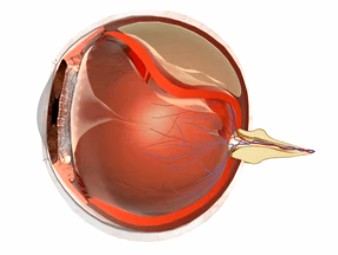Gene Therapy for Ophthalmic Diseases
Inquiry
Rapid advances in gene therapy research have led to breakthroughs in the treatment of ophthalmic diseases. The unique anatomy of the eye provides an ideal platform for gene therapy programs, making it possible to deliver precise treatments through localized injections. CD Formulation focuses on the development of AAV vector-based gene therapy by optimizing vector design and improving manufacturing processes to provide safer and more effective therapeutic options for patients with visual impairment.
Advantages of Gene Therapy in Ophthalmic Diseases
Gene therapies offer new hope for the treatment of ophthalmic diseases, such as the precise delivery of functional gene fragments to diseased tissues through modified adeno-associated virus vectors. This therapy can repair the underlying genetic defects that cause vision impairment. This genetic level of intervention has a significant advantage over traditional treatments in that a single treatment can produce long-term results, which is revolutionary for inherited retinopathies that require ongoing treatment.
The immune immunity of the eye provides a double guarantee of safety. The risk of systemic immune reactions triggered by viral vectors is significantly reduced by the presence of the blood-retinal barrier. It has been demonstrated that, through minimally invasive methods such as vitreous or subretinal injections, the vectors are able to precisely localize the lesion area, enhancing efficacy while minimizing the impact on normal tissue.

Main Applications of Gene Therapy in Ophthalmic Diseases
Leber hereditary optic neuropathy (LHON)
Leber hereditary optic neuropathy (LHON) is a maternally inherited disease caused by mutations in mitochondrial DNA (mtDNA).LHON can be treated in gene therapy by delivering normal mitochondrial genes (e.g., ND4) via adeno-associated viral (AAV) vectors to the retinal ganglion cells to repair defects in respiratory chain complex I function. In addition, the synergistic effect of nuclear modification genes was utilized. CRISPR/Cas9 technology promises better treatment of this disease.
For LHON, we can provide the following service support.
- Customized AAV vector development. Optimization of a mitochondria-targeted delivery system for ND4 gene to enhance transfection efficiency.
- Gene editing toolkit. Provide CRISPR/Cas9 technology for functional validation and repair of nuclear modification genes.
- Experimental trial support. Help customers optimize experimental protocols, including optimizing the route of administration (e.g., vitreous cavity injection).
Optic nerve injury
Optic nerve damage can be caused by trauma, glaucoma, or inflammation, leading to irreversible vision loss. Research advances in gene therapy for optic nerve injury include the combination of neural stem cells and gene editing, which activates the transdifferentiation of Mullerian glial cells (MGs) into retinal progenitor cells and promotes neuronal regeneration through gene editing. As well as axonal regeneration modulation, where gene therapy is utilized to deliver neurotrophic factors (e.g., BDNF) or inhibit axonal growth inhibitors for improving optic nerve pathway reconstruction.
For optic nerve injury, we can provide the following service support.
- Multifunctional vector design. Development of composite vectors incorporating neurotrophic factors and inhibitory factors for precise regulation.
- Stem cell gene editing platform. Provide delivery systems for genes related to MG cell transdifferentiation.
Vascular retinopathy
Vascular retinopathy is characterized by abnormal blood vessel proliferation, leakage, or occlusion, leading to vision loss and even blindness. In this disease, anti-VEGF genes are delivered by AAV vectors to inhibit abnormal angiogenesis for a long period, or CRISPR technology is utilized to target and regulate hypoxia-inducible factor (HIF-1α) or VEGF pathway genes to restore the normal function of blood vessels.
For vascular retinopathy research, we can provide the following service support.
- Targeted delivery system. Development of RPE-specific promoter-driven AAV vectors to enhance therapeutic specificity.
- Innovative gene-drug combination programs. Combine anti-VEGF gene therapy with small-molecule drugs to extend the efficacy cycle.
- Preclinical model validation. Evaluate the safety and efficacy of gene therapy using diabetic mice or oxygen-induced retinopathy models.
Our Capabilities of Gene Therapy Formulation Development in Ophthalmic Diseases
- Innovative technologies. We are committed to developing and optimizing advanced gene delivery vectors for precise delivery and efficient expression of gene therapy for ophthalmic diseases.
- Comprehensive collaboration. We actively work closely with ophthalmology experts, research institutions and related companies to form a strong R&D and application network.
- Strict quality control. We have a rigorous quality control system in place for our gene therapy formulations developed for ophthalmic diseases to ensure the quality of our products.
Explore Our Gene Therapy Formulation Development for Cardiovascular Diseases
Gene Delivery Systems Development
It is difficult to reach the intraocular or fundus lesions and to enter the cells to exert its effect through the traditional topical eye drops or systemic administration of gene therapy, and its effective delivery must be realized with the help of suitable gene carriers. We provide viral and non-viral vector development services for ocular gene therapy research. Viral vectors include adenovirus (Ad) vectors, adeno-associated virus (AAV) vectors, lentivirus (LV) vectors, and retroviral vectors. Non-viral vectors include naked DNA, nanoparticles, and so on. We can provide customized gene delivery vectors for gene therapy of ophthalmic diseases according to the characteristics of customers' projects.
Gene Therapy Formulation Drug Delivery System Development
For various ocular diseases, traditional noninvasive treatments such as ocular surface drops or systemic administration can achieve certain therapeutic effects, but for intraocular and posterior segment diseases, even small molecule drugs are difficult to reach. We continue to optimize our gene formulation delivery strategies to overcome ocular absorption barriers and reduce potential risks in drug delivery, leading to even better solutions for gene therapy of ophthalmic diseases.
CD Formulation is a gene therapy formulation development company and we are committed to promoting research and development in gene therapy. If you are interested in us, please feel free to contact us.
Related Services


